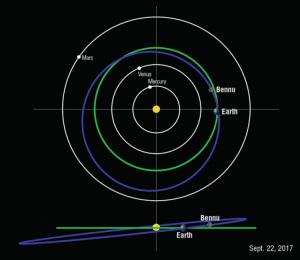Dr. Scheeres, a professor in the Ann and H.J. Smead Department of Aerospace Engineering Sciences was the project leader.
Colorado-based Lockheed Martin, built the Osirus-Rex spacecraft to accommodate NASA scientists and engineers’ goal of learning more about asteroids. They extensively analyze images during the landing process with the terrain relative navigation (TRN).
The OSIRIS-REx spacecraft mapped and studied the asteroid’s surface, topography, and other conditions. With NASA’s optical in order to collect samples and get up-close photographs of the rocky landscape.
Bennu study has surprises

The study showed some surprising results. The team believes that the asteroid Bennu may be hollow. The asteroid’s core seems to be much weaker than its exterior. The asteroid is moving through orbit extremely fast. With the fragility of a hollow planet, Bennu could literally spin itself to pieces.
“We were hoping to find out what happened to this asteroid over time, which can give us better insight into how all of these small asteroids are changing over millions, hundreds of millions, or even billions of years,” Dr. Scheeres said. “Our findings exceeded our expectations.”


